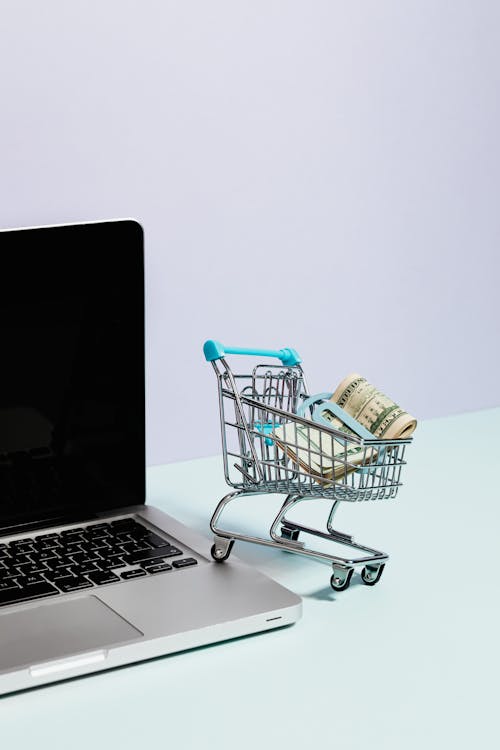Recommerce definition
Thrift stores of all kinds and flea markets are well-known destinations for eco-friendly shopping, having long been popular with hipsters and bargain hunters. Recommerce is a modern take on an old idea: keeping perfectly good products out of the trash stream.

Buying and selling old or secondhand goods is known as recommerce. This is predicated on the concepts of “reverse commerce” and “repeat commerce.” Such a practice allows companies and individuals to profit from previously owned goods rather than letting them go to waste. It fulfills the renowned “Reduce – Reuse – Recycle” trifecta in all three areas.
Other industries that fall under the category of commerce include building restoration, repurposing materials, and creating new goods from recycled ones. You get the notion if you’ve ever carried a purse made from a pair of jeans. Also, this applies if you’ve purchased lightly used shoes, or played on a playground with rubber mulch created from old tires.
The resale model is used by a wide range of businesses, from high-end luxury shops to thrift stores, and many online marketplaces have brought this idea to the masses. For example, collectibles, artwork, and home items are among the more niche e-commerce sectors.

What is recommerce?
Half of customers engage in at least one Recommerce activity more than once a year. 7,000 consumers and 1,750 micro and small businesses (SMBs) were polled about their relationship with Recommerce across seven European countries.
In summary, no one factor is propelling consumer adoption. The main financial incentives for selecting Recommerce for resale, rental, and repair endeavors are the ability to save or earn more money. Users’ primary motivation for refilling and requesting services is environmental considerations.
The younger generation
Buying used goods is more cost-effective and reduces environmental impact. As a result, younger customers are more inclined to shop for used goods. Except for refilling, which is where 35 to 54-year-olds have an advantage, 18 to 34-year-olds are the primary users of every type of Recommerce activity. Firms that want to connect with a younger audience can achieve success by speaking the language of the current generation. They can accomplish this by emphasizing economical and sustainable solutions.
Whatever the reason behind consumer behavior, Recommerce is being tapped into by companies of all kinds to draw in new clients, cut expenses, and boost revenue. Traditional retailers are targeting larger markets with buy-back as well as resale programs. These facilitate customers’ sustainable choices and build brand attachment. These programs let customers buy pre-owned goods and return them, often for a gift card.

Recommerce Market
Consumers use both legal and informal markets, which are the origins of commerce, to directly sell things in the secondary market. Flea markets, garage sales, and consignment stores were the main sources of this kind of in-person sales activities before the digital age. Digital marketplaces, like Craigslist, eBay, Facebook Marketplace, and Amazon, give users a platform to resell used goods to consumers who are searching for lower prices on items with longer shelf lives.
These businesses include payment processing on their systems. But with the introduction of person-to-person transaction processing platforms like PayPal, Venmo, and others, it’s now much simpler for people to sell their items to a much larger audience. All things considered, the recommerce market sector has grown thanks to the internet technologies and marketplaces that used goods sellers may access.
The future

In the coming years, buying used goods or apparel will seldom be seen as scandalous. Purchasing and reselling old goods not only benefits the environment, but it may also save customers a significant amount of money. In fact, it can save them roughly $1,760 over a year.
Furthermore, 93% of customers agree that increased prices influence their choice of whether to buy or sell pre-owned items to save money, citing concerns about a potential recession and the strain of inflation on all industries.
Recommerce solutions
Several products can outlive customer upgrade cycles, thus OEMs are providing a method of reintroducing their goods into the secondary market. Trade-in programs allow customers to sell home their used gadgets and receive credit toward new ones from large firms like Apple and Canon.
Customers can also trade in used goods for credit or discounts at retailers like Amazon, Best Buy, and Target. These programs cover everything from car seats to gadgets. Companies that sell apparel and outdoor gear, like REI, Patagonia, Levi’s, and North Face, allow customers to return or give gently used items, giving them a second chance at life and promoting more environmentally friendly recycling methods.
Trade-in programs
Trade-in programs for mobile devices and wearables are offered by mobile operators including Verizon, AT&T, and T-Mobile in exchange for discounts on upgraded products. Based on the original device’s trade-in value, they provide discounted prices. After being reconditioned by their partners, the used devices are either resold in large quantities to resellers or reintroduced into retailers. All things considered, these services offered by manufacturers and retailers offer a fantastic method to enter the secondhand market and recycle.

This significant development is a direct result of companies implementing recommerce tactics into their business plans. The need for used items is growing. These may come in the form of current offers like a trade-in program or the core business itself like Facebook Marketplace.
The result
By providing trade-in and upgrade programs, retailers and big manufacturers may retain their current client base by promoting recommerce. It draws in a new customer base as well, one that is interested in secondhand goods at steep discounts.
The recommerce industry has a lot of room for expansion and development. P2P sales and companies providing their own recycling, refurbishing, and product upgrading pathways will fuel the industry’s further growth. Recommerce merchants are expanding twenty times faster than the whole retail industry, which is significant since it indicates that there is a need and a demand for participation in this market.
Recommerce industry
Many firms may not have the necessary infrastructure in place for handling the digital nature of their items, which makes it difficult to track each item’s life cycle efficiently. Digitization plays a major role in the growth of the circular economy by guaranteeing the sustainability and traceability of products.
In this business, product authentication is essential to guaranteeing its originality and genuineness. Particularly when spending a lot of money on luxury or designer goods, buyers want to be certain they are receiving value for their money. The advent of digital identities, such as distinct QR codes on products, has raised expectations for easily verifiable objects.
Product transfers
The saying “moving parts cause friction” is true. Overall, product transfers between vendors and purchasers present several logistical difficulties. The purchasing procedure has been made simpler by several platforms and apps, but the selling process is still frequently complicated.

Sellers have a lot of work ahead of them, from managing offers and shipping to taking pictures and providing a description of the item. Consequently, it is vital to address the difficulty of simplifying this process. The foundation of traditional business models is the idea of creating and marketing entirely original products. Shifting to or implementing a recommerce model could be at odds with long-standing business principles and tactics, particularly when taking planned obsolescence into account.
It is crucial to guarantee the longevity and quality of products, particularly in the electronics industry. Customers want assurances that the products they buy especially if they are pre-owned—will endure and won’t break down in the future.
Bottom line
Recommerce is the buying and selling of used products which is turning into a big industry with each passing day. Earlier only youngsters were attracted to this idea of commerce, however, more and more people are turning to this eco-friendly and cost-effective business model. You can utilize product data management tools like PIM for effective data management if you wish to upscale your recommerce business by contacting us at Pimberly.












